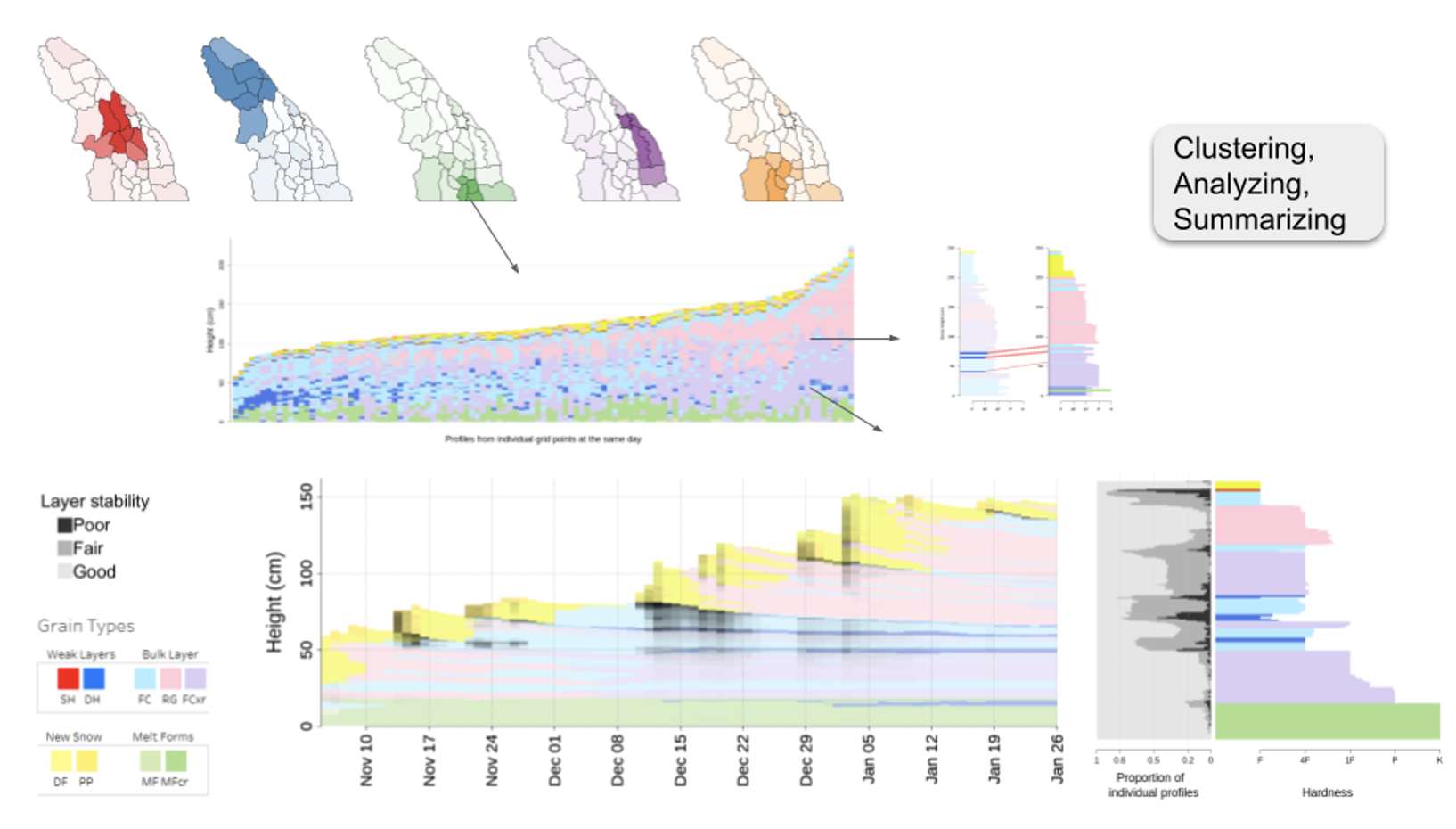
Project Overview
Snowpack models can describe the layered structure of the snowpack in great detail, offering insights that traditional point observations alone cannot. However, until recently much of this rich information went underutilized in avalanche forecasting because no efficient tools existed to process and interpret large volumes of snow profile data. Forecasters typically had to reduce detailed model output to simple summaries (like total snow depth or average properties), which is of limited value for avalanche risk assessment because dangerous weak layers can be thin and localized. This project addressed that knowledge gap by developing novel numerical methods to help experts make sense of extensive snowpack datasets in an operational context.
Our team created algorithms to align and analyze snow profiles in ways that mimic how a human avalanche expert would compare snow layers. A key innovation is a layer-matching technique that pairs up corresponding layers between two profiles (for example, identifying the same weak layer in different snow pits) and “aligns” them, even if their depths differ. Building on this alignment, we introduced a new measure of snow profile similarity that focuses on characteristics relevant to avalanche hazard (such as weak layer type, hardness, or age). These tools allow us to effectively average many profiles together by aligning their layers, yielding a representative profile and meaningful summary statistics for large regions or ensembles of simulations. Moreover, by quantifying profile similarity, we started to work towards clustering hundreds of snow profiles into groups that share similar snow and avalanche conditions (see Related Projects further below).
The results of this project greatly enhanced the interpretation of snowpack model output for avalanche forecasting. These techniques provide forecasters with a powerful, reproducible workflow to mine model data for critical weak layers and patterns. The algorithms also enable direct comparisons between simulated and observed snow profiles, helping to verify model performance by pinpointing discrepancies (e.g., if the model predicts a weak layer that field observers have not seen, or vice versa).
Throughout the project, an emphasis was placed on open science and accessibility. All the developed methods have been released as open source software packages in the R programming language, complete with thorough documentation and examples. This ensures that avalanche centers and researchers can freely adopt these tools and reproduce our workflows on their own data.
Involved Researchers
- Florian Herla
- Simon Horton
- Pascal Haegeli
- Patrick Mair (Department of Psychology, Harvard University, Cambridge, MA, USA)
Partner Organizations
Project Funding
Relevant Publications

How many snow profiles can you process? Making the wealth of information included in large-scale snowpack simulations more accessible for operational avalanche forecasting

A data exploration tool for averaging and accessing large data sets of snow stratigraphy profiles useful for avalanche forecasting

Snow profile alignment and similarity assessment for aggregating, clustering, and evaluating of snowpack model output for avalanche forecasting

sarp.snowprofile.alignment: Snow Profile Alignment, Aggregation, and Clustering

sarp.snowprofile: Snow Profile Analysis for Snowpack and Avalanche Research
Click here for a full listing of SARP software packages.
Florian Herla
Snow profile analysis: Aggregating, clustering, evaluating of snowpack data for avalanche forecasting
2020 AGU Fall Meeting
Click here to view all SARP presentation videos.

